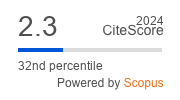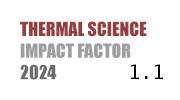ABSTRACT
With the growing demand for renewable energy, the application of thermophotovoltaic conversion materials in energy storage and conversion has attracted significant attention. To enhance thermophotovoltaic conversion efficiency and promote the development of energy storage technologies, this study introduces modified carbon nanotubes (CNTs) to improve the thermal conductivity of flexible phase change films made from polylactic acid (PLA) and polyethylene glycol (PEG), and investigates their shape stability, phase change properties, thermal conductivity, and thermophotovoltaic conversion performance. The results show that the CNT-modified films exhibit excellent shape stability and flexibility, maintaining their shape above the melting temperature of PEG and recovering to their original form upon cooling. As the CNT content increases, the thermal conductivity of the films significantly improves, with the 7% CNT composite film showing a 158% increase in thermal conductivity, although the latent heat value decreases slightly. The thermophotovoltaic conversion efficiency increases with the CNT content, rising from 79.3% (1% CNTs) to 91.8% (7% CNTs), while the phase change time is reduced. The introduction of CNTs optimizes the heat transfer process, significantly enhancing the thermophotovoltaic conversion performance of the films. This study provides a promising solution for the development of solar thermal storage materials.
KEYWORDS
PAPER SUBMITTED: 2024-12-30
PAPER REVISED: 2025-05-09
PAPER ACCEPTED: 2025-05-19
PUBLISHED ONLINE: 2025-07-05
- Lewis, N.S., Toward cost-effective solar energy use, Science. 315 (2007), 5813, pp. 798-801
- Chu, S., et al, Opportunities and challenges for a sustainable energy future, Nature. 488 (2012), 7411, pp. 294-303
- de la Pena O'shea, V.A., et al, Recent Advances Towards Sustainable Materials and Processes for Energy Conversion and Storage, Advanced Energy Materials. 11 (2021), 43, pp. 2102874
- Gur, et al, Searching for a Better Thermal Battery, Science. 335 (2012), 6075, pp. 1454-1455
- Kucharski, T.J., et al, Templated assembly of photoswitches significantly increases the energy-storage capacity of solar thermal fuels, Nature Chemistry. 6 (2014), 5, pp. 441-447
- Arteconi, A., et al, State of the art of thermal storage for demand-side management, Applied Energy. 93 (2012), pp. 371-389
- Li, X., et al, Preparation of stearic acid/modified expanded vermiculite composite phase change material with simultaneously enhanced thermal conductivity and latent heat, Solar Energy Materials and Solar Cells. 155 (2016), pp. 9-13
- Fan, X., et al, Shape-Stabilized Cellulose Nanocrystal-Based Phase-Change Materials for Energy Storage, Acs Applied Nano Materials. 3 (2020), 2, pp. 1741-1748
- Qi, G.Q., et al, Polyethylene glycol based shape-stabilized phase change material for thermal energy storage with ultra-low content of graphene oxide, Solar Energy Materials and Solar Cells. 123 (2014), pp. 171-177
- Wu, X.H., et al, Experimental Study of the Thermal Properties of a Homogeneous Dispersion System of a Paraffin-based Composite Phase Change Materials, Journal of Energy Storage. 36 (2021), pp. 102398
- Wu, X., et al, Experimental study of thermo-physical properties and application of paraffin-carbon nanotubes composite phase change materials, International Journal of Heat and Mass Transfer. 140 (2019), pp. 671-677
- Qi, X.D., et al, Flexible phase change composite materials with simultaneous light energy storage and light-actuated shape memory capability, Composites Science and Technology. 181 (2019), 8, pp. 711-719
- Wu, W., et al, Form-stable and thermally induced flexible composite phase change material for thermal energy storage and thermal management applications, Applied Energy. 236 (2019), 15, pp. 10-21
- Cc, A., et al, Performance evaluation of asphalt mixture using polyethylene glycol polyacrylamide graft copolymer as solid-solid phase change materials, Construction and Building Materials. 300, (2021),20, pp. 124221
- Chang, Z.J., et al, Review on the preparation and performance of paraffin-based phase change microcapsules for heat storage, Journal of Energy Storage. 46 (2022), pp. 103840
- Wu, X.H., et al, Performance Characterization of Form-Stable Carbon-based Network Microcapsules for Thermal Energy Storage, Applied Thermal Engineering. 212 (2022), pp. 118632
- Huang, Q., et al, Flexible composite phase change material with anti-leakage and anti-vibration properties for battery thermal management, Applied Energy. (2022), 1, pp. 309
- Chai, S., et al, Form-Stable Erythritol/HDPE Composite Phase Change Material with Flexibility, Tailorability, and High Transition Enthalpy, ACS Applied Polymer Materials. 2 (2020), 11, pp. 4464-4471
- Cai, Z., et al, Flexible phase change materials with enhanced tensile strength, thermal conductivity and photo-thermal performance, Solar Energy Materials and Solar Cells. 219 (2021), pp
- A, M.M.K., et al, Form-stable phase change materials for thermal energy storage, Renewable and Sustainable Energy Reviews. 16 (2012), 4, pp. 1999-2040
- Yan, K.A., et al, An intrinsically flexible phase change film for wearable thermal managements, Energy Storage Materials. 34 (2021), pp. 508-514
- Gu, J., et al, Functionalization of Biodegradable PLA Nonwoven Fabric as Superoleophilic and Superhydrophobic Material for Efficient Oil Absorption and Oil/Water Separation, ACS applied materials & interfaces. 9 (2017), 7, pp. 5968-5973
- Lu, X., et al, Bio-based poly (lactic acid)/high-density polyethylene blends as shape-stabilized phase change material for thermal energy storage applications, Solar Energy Materials and Solar Cells. 192 (2019), pp. 170-178
- Ostafinska, A., et al, Synergistic effects in mechanical properties of PLA/PCL blends with optimized composition, processing, and morphology, RSC Advances. 5 (2015), 120, pp. 98971-98982
- Wang, B., et al, Thermal, crystallization, mechanical and decomposition properties of poly(lactic acid) plasticized with poly(ethylene glycol), Journal of Vinyl & Additive Technology. 24 (2018), pp. E154-E163
- Singh, P., et al, Evaluation of carbon based-supporting materials for developing form-stable organic phase change materials for thermal energy storage: A review, Solar Energy Materials and Solar Cells. 246 (2022), pp. 111896
- Shi, J., et al, Flexible Phase Change Materials for Thermal Energy Storage, Energy Storage Materials. 41 (2021), pp. 321-342
- Sundararajan, S., et al, Versatility of polyethylene glycol (PEG) in designing solid-solid phase change materials (PCMs) for thermal management and their application to innovative technologies, Journal of Materials Chemistry A. 5 (2017), 35, pp. 18379-18396
- Wei, Y., et al, Leakage-proof phase change composites supported by biomass carbon aerogels from succulents, Green Chemistry. 20 (2018), pp. 1858-1865
- Bataineh, K., et al, Optimal design for sensible thermal energy storage tank using natural solid materials for a parabolic trough power plant, Solar Energy. 171 (2018), pp. 519-525
- Ould Amrouche, S., et al, Overview of energy storage in renewable energy systems, International Journal of Hydrogen Energy. 41 (2016), 45, pp. 20914-20927
- Pennelli, G., et al, Thermal conductivity reduction in rough silicon nanomembranes, IEEE Transactions on Nanotechnology. 17 (2017), 3, pp. 500-505
- Konstantopoulos, G., et al, The effect of interfacial resistance and crystallinity on heat transfer mechanism in carbon nanotube reinforced polyethylene, Materials & design. 199 (2020), 10, pp. 109420
- Gao, M., et al, Solar absorber material and system designs for photothermal water vaporization towards clean water and energy production, Energy & Environmental Science. 12 (2019), 3, pp. 841-864

